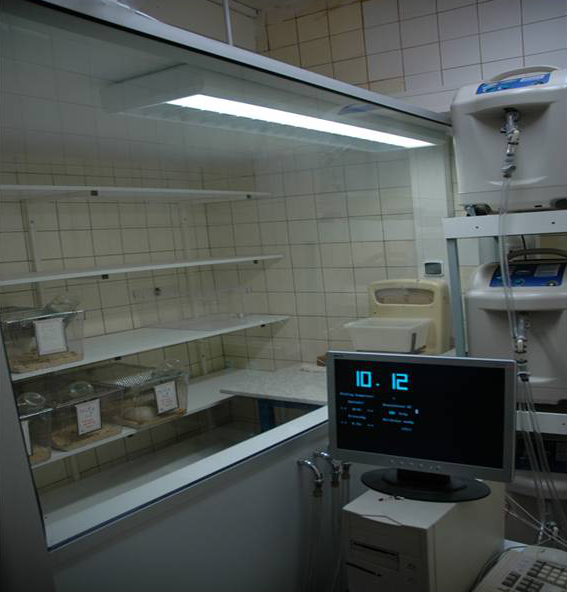Cardioprotective mechanism of chronic hypoxia
Prolonged exposure to hypoxic environment leads to adaptation which is associated with improved cardiac tolerance to acute oxygen deprivation. We study molecular mechanisms underlying the cardioprotective effects of chronic hypoxia on various manifestations of ischemic injury.
Chronic hypoxia
Chronic hypoxia is the main pathophysiological feature of several disease states, but it also occurs naturally in high-altitude residents or during development in utero. Organisms react to hypoxia by activating various adaptive responses aiming to compensate the lack of oxygen and maintain homeostasis.
Already in the late 50th of the last century, epidemiological observation indicated that the incidence of ischemic heart disease is much lower in high-altitude dwellers than in lowlanders. At the same time, experimental studies proved that the hearts of rats adapted to chronic hypoxia has improved tolerance to injury caused by acute ischemia or anoxia. Precise molecular mechanism underlying the cardioprotective effects of chronic hypoxia is still unclear; only recently we began to reveal step by step some factors that play a role. In view of the fact that the protected cardiac phenotype persists long after the cessation of the stimulus, understanding its mechanism may potentially contribute to a development of new strategies in prevention and therapy of ischemic states.
We study the cardioprotective mechanism of chronic hypoxia in cooperation with researchers from the Faculty of Science Charles University in Prague, Institute for Heart Research SAS in Bratislava and Cardiology Research Institute in Tomsk. Experimental animals are adapted either continuously or intermittently to various regimens of hypoxia in normobaric or hypobaric chambers usually for four weeks.

Normobaric hypoxic chamber
Exp Biol Med 238:233-41,2013
Curr Pharm Des 19:6880-9,2013
Our ongoing projects focus mainly to the role of following factors:
- mitochondrial potassium channels (KATP and BKCa)
- reactive oxygen and nitrogen species
- proinflammatory and antiinflammatory cytokines (TNF-α, IL10)
- protein kinase C (isoforms δ a ε)
- β-adrenergic and a opioid receptors
Chronic hypoxia versus physical activity
Similarly as chronic hypoxia, regular physical activity also affords long-lasting cardiac tolerance to acute ischemic injury. The aim of our new project is to find out, whether these two cardioprotective phenomena utilize the same or different molecular mechanisms and whether the salutary effects of chronic hypoxia can be further potentiated by regular exercise (running on a treadmill).
